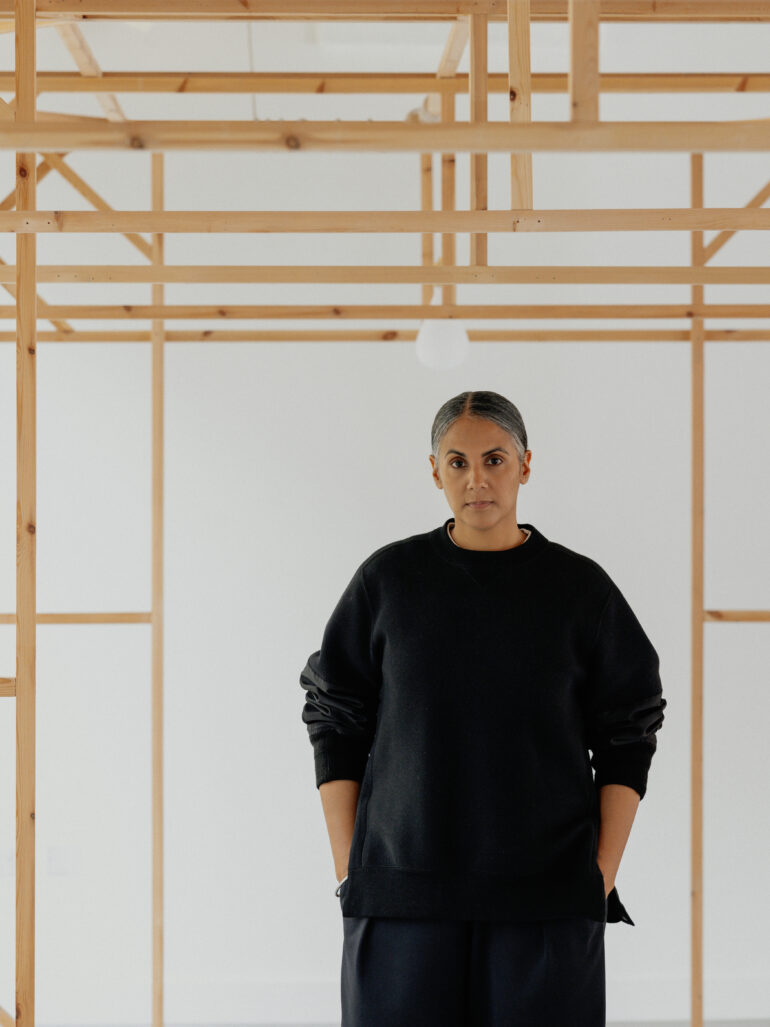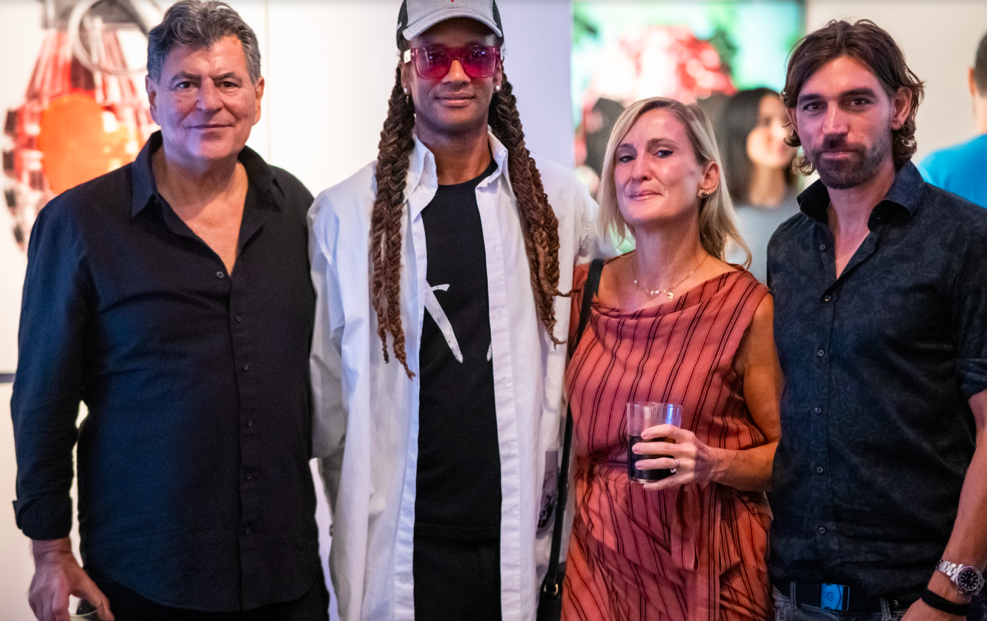For the latest ‘Culturalee in Conversation’ we talk to Deep Kailey, co-founder and artistic director of Without SHAPE Without FORM gallery. Deep Kailey is a visionary cultural narrator and artistic director whose work bridges art, fashion, and storytelling on a global stage. Based in London, she is the co-founder and artistic director of Without SHAPE Without FORM, an arts and cultural organisation dedicated to exploring Sikh teachings through contemporary art. The organisation recently opened its first permanent gallery space with Reflections – Sangat and the Self, an inaugural exhibition that invites audiences to experience Sikh wisdom through immersive, multi-disciplinary storytelling.
With a career spanning publishing, design, and luxury fashion, Deep’s creative journey includes roles as former Fashion Director at Tatler and Fashion Editor of Vogue India. Today, alongside her cultural work, she leads her creative company Deep, shaping global visual languages and storytelling strategies for luxury brands. Through exhibitions, films, editorials, and beyond, she continues to push boundaries with a progressive and forward-thinking approach, captivating audiences worldwide.
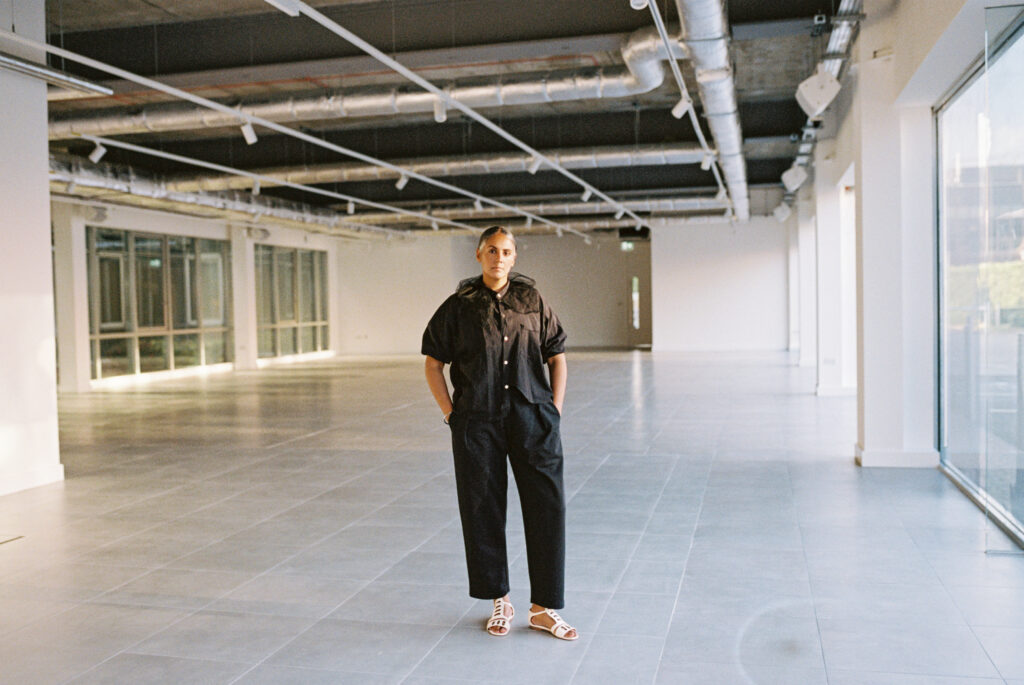
Reflections – Sangat and the Self is the inaugural exhibition in without SHAPE without FORM’s first permanent space–a former car showroom in Slough. How did you find the space, and what made you choose Slough as the location for your gallery?
The showroom found us, in a way. When I first stepped into the building – all glass, light and exposed structure – I could already imagine the energy it could hold. Slough made sense too. It’s a town that reflects modern Britain: migration, resilience, and everyday creativity. Choosing to root without SHAPE without FORM here is about saying art and spirituality belong in places like this, not only in the expected cultural centres.
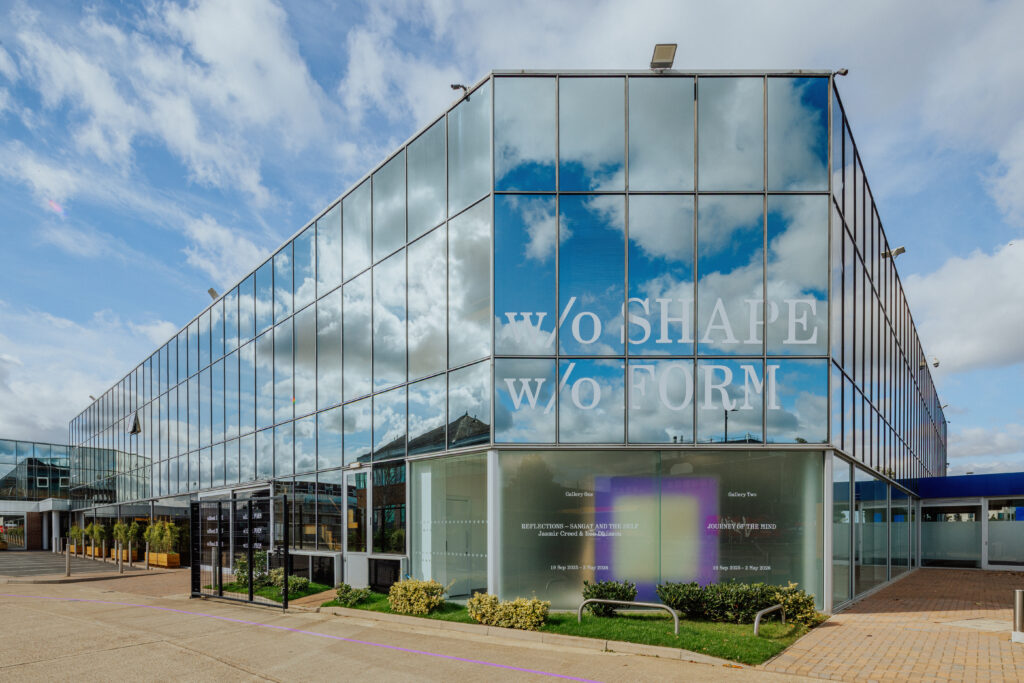
Where does the title Reflections – Sangat and the Self come from?
The title evolved with the artists. Originally the show was called Medicine for the Mind – which referenced an artwork that still exists in the exhibition as a takeaway for visitors. But through our conversations with Jasmir and Roo, the title Reflections – Sangat and the Self felt closer to our ambitions for the project. It speaks about reflection both inwardly and outwardly: the self in dialogue with sangat, the community we surround ourselves with.
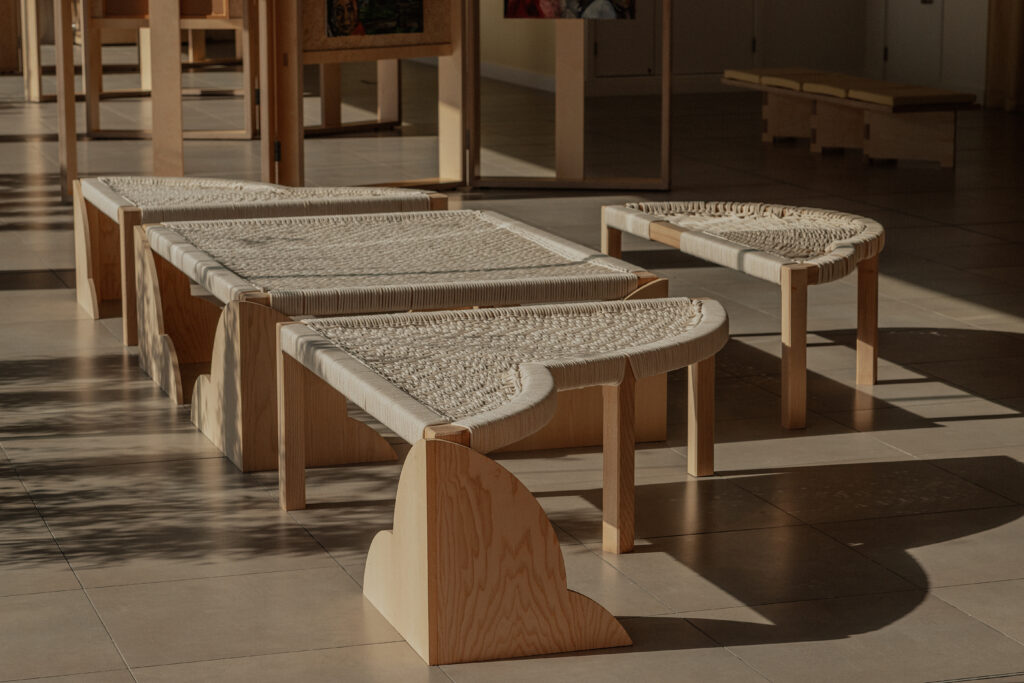
Reflections includes interventions by without SHAPE without FORM, which is the name of the gallery and also a new kind of artist-gallery hybrid. Can you explain a bit about how these interventions will respond to the art of Jasmir Creed and Roo Dhissou?
Their practices speak about healing, both individually and collectively. What we do is weave those voices together and bring them into dialogue with contemporary Sikh knowledge. The mind itself is without shape, without form – and so is our organisation, which I see as a movement more than a gallery. Our interventions don’t so much “respond” to Jasmir and Roo’s work as flow through it. The result is a space that asks people to turn inward – to reflect on healing that begins within.
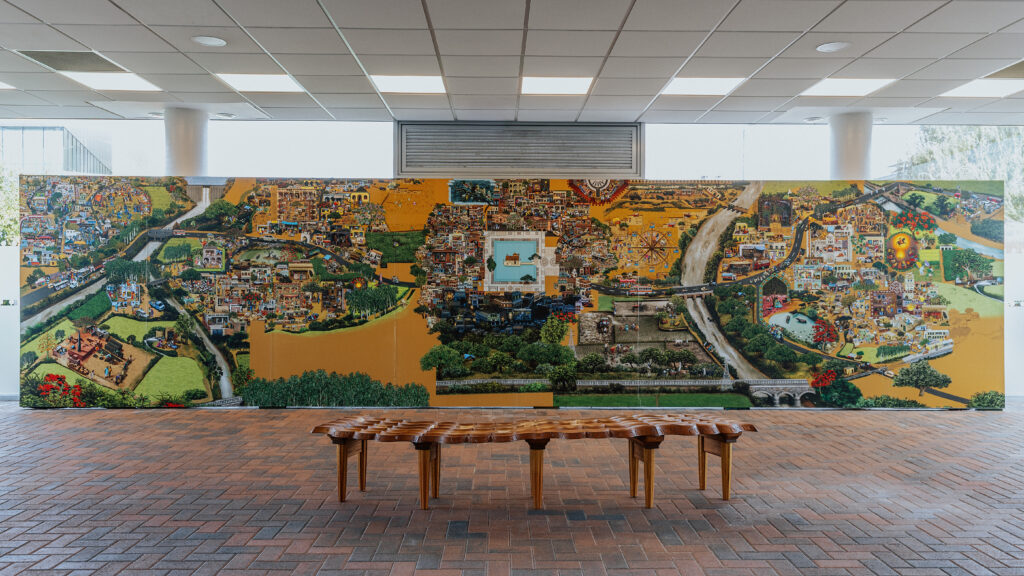
How does your background as a fashion director at Condé Nast translate to the art world, and does your experience as a stylist working with iconic creative figures resemble the experience of collaborating with artists?
For me, the role of an editor and the role of an artistic director are the same: you’re a conductor. Whether it’s collaborating with musicians, models, poets or photographers – the task is to bring them together into one harmonious story. Both require a deep understanding of people, of audiences, of where culture and current affairs sit – and, yes, a sense of taste. I’ve had the privilege of working with figures like Anya Taylor-Joy, Nirbhai (Nep) Singh Sidhu, and many others, and each collaboration taught me that creativity is always about listening, trust and sharing knowledge in ways that feel accessible.
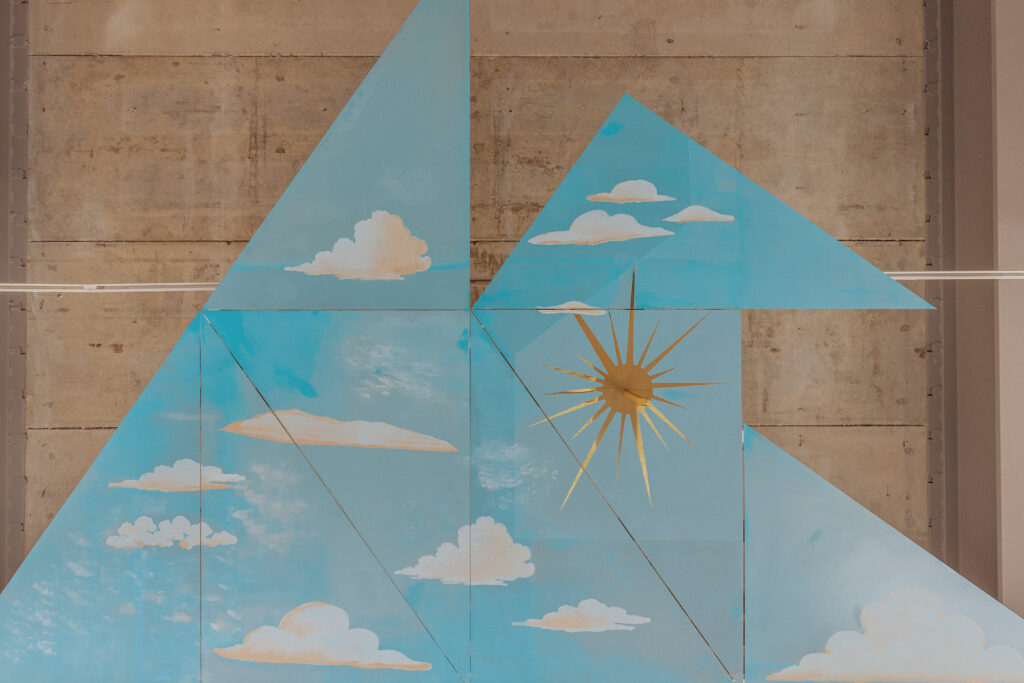
Without SHAPE without FORM is described as “an assembly of artists, thinkers and cultural practitioners committed to making moments of self-discovery accessible to all”. How did you come up with the philosophy behind without SHAPE without FORM, and was it a response to the outdated gallery model that seems to be dissolving at the moment and heading towards more community-focused, collaborative gallery models?
Our philosophy isn’t about rejecting the old gallery model per se, though I can see why someone could read it that way. It issimply about being true to what we believe; that galleries should be places where people discover themselves, not just discover objects. These ideas come from Sikh teachings that describe a way of enduring, expressing, being and living. without SHAPE without FORM is fully embodied by the people who are part of it, and it shows up in everything we do: exhibitions, stories, podcasts, events. We’re simply showing up in an authentic way. Sharing knowledge that feels urgent and necessary in the world right now is second nature to us. If that looks like a new model, then so be it.

Without SHAPE without FORM is inspired by Sikh philosophical concepts. How do you see art and spirituality converging in the space?
Art is a language. Spirituality is an inner journey. Sikhi is the method that brings the two together. Sangat (gathering) and Simran (a practice of stillness and deep listening) are the mediums. For me, it’s about a practice that is lived and embodied. When people enter our space, I don’t want them just to see art, I want them to feel a shift, however small, in themselves. Because in a time of so much noise and division, that inner stillness isn’t just personal, it’s a radical act of healing.
Find more information on Without SHAPE Without FORM here.


